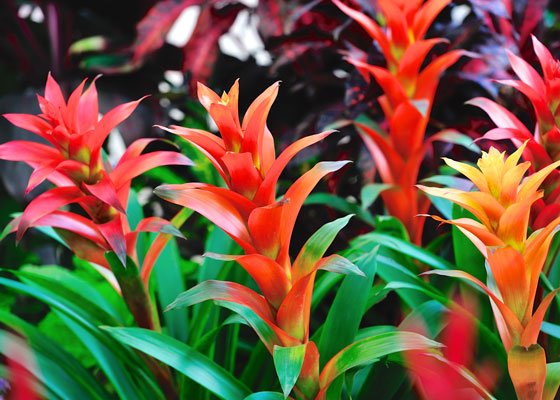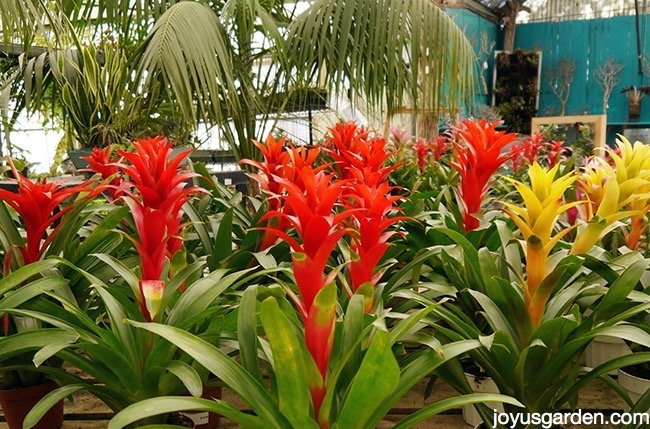Bromeliads are native to South and Central America, where they are found in environments ranging from hot dry deserts to warm dark rainforests to cool exposed mountainsides. Depending upon the species, they grow on trees (epiphytic), on rocks (saxicolous) and in the ground (terrestrial) in their native habitat but adapt exceptionally well to pot culture.

LIFECYCLE
Bromeliads take two to three years to grow to maturity, they flower once, and then gradually die. But during this decline the parent plant produces several offshoots (called pups) which in turn become mature plants. Bromeliads can be left as a clump or the pups can be separated when they are about half the size of the parent plant.

LIGHT
Put your bromeliad in a brightly lit area but protect them from the harshest direct sunlight. 50% shade will suit most bromeliads. ''Ferneries '' are often too dark to maintain good compact growth and colourful leaves.
WATER
Give them a good drenching regularly in warm months. Keep them a bit dryer in winter.
FERTILIZER
Use half to quarter strength doses of soluble fertilizer occasionally in spring and summer. Bromeliads absorb water and nutrients through their leaves so spray the whole plant with the weak solution . Or, you can add small amounts of slow release fertilizer to the potting mix.

AIR
Put your bromeliad in a position that has good air circulation. Good air circulation and fresh air will promote healthy growth. Bromeliads are not really 'indoor' plants even though some of the shade-loving ones will tolerate life indoors.
TEMPERATURE
Bromeliads like temperatures in the 20's, tolerate temperatures in the 'teens and will survive single figure temperatures.
source